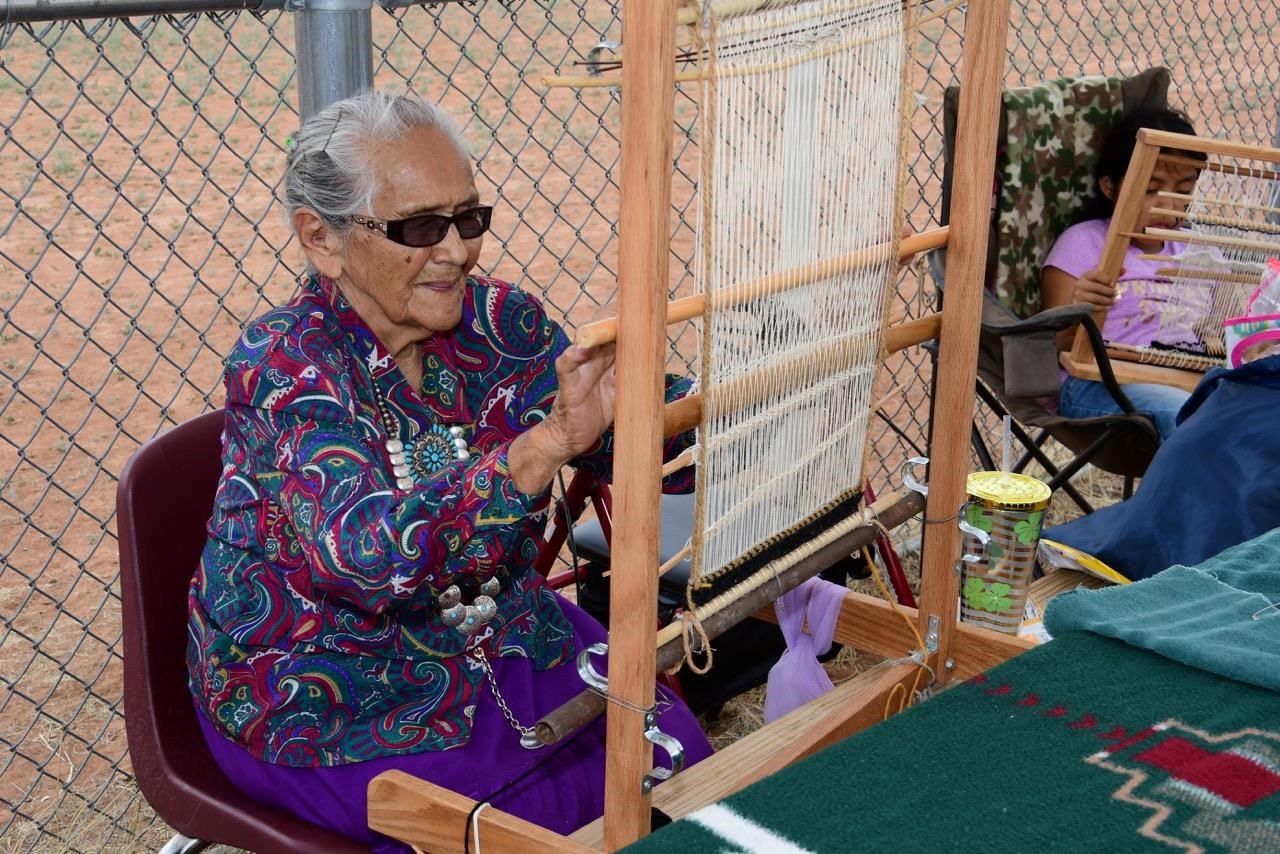Member Spotlight: First Nations Development Institute

For the month of May, GIA’s photo banner features work supported by First Nations Development Institute.
Art is a connector, convener, and catalyst for strengthening the infrastructure of communities. This is true everywhere, and certainly in Indian Country where advancing traditional art and culture bearers is key to sustaining time-honored cultures. Based on this, through its Native Arts Initiative, First Nations Development Institute has awarded over $2.2 million to Native-led nonprofits and tribal programs since 2014 to help build and strengthen their traditional Native arts programming and organizational capacity.
First Nations’ Program Director of Strengthening Tribal and Community Institutions Catherine Bryan says there are many reasons art is so important in Native communities, and those reasons have become especially apparent now, in light of the COVID-19 pandemic. “In trying times like these, we’ve seen how embedded our partners are in their communities, and how they have relied on the relationships they’ve built through art to reach out and help others.”
Bryan explains that, as grantees of the Native Arts Initiative, these partners work to preserve, revitalize and proliferate traditional artistic and cultural assets. But moreover -- because of their role in advancing art in their communities -- they’ve been able to create the network and connections to identify community needs and respond almost immediately.
Bryan applauds community partners in areas of Indian Country that have been hard hit by the pandemic such as the Pueblo of Pojoaque’s Poeh Cultural Center in New Mexico, which has transformed their programming to address the needs of Tewa artists by creating virtual Talking Circles, free arts trainings, online demonstrations, and a Facebook Native Artist Market Place, as well as providing emergency relief grants to Native artists.
Meanwhile, the Zuni Youth Enrichment Project (ZYEP) (Zuni, New Mexico) continues to serve Zuni youth and families who are now facing food and water shortages due to the pandemic. ZYEP has pivoted programming to provide weekly no-contact connections in which they distribute health and wellness kits; maintain Zuni trails; prepare and distribute home garden kits and rainwater collection systems; work with Zuni artists to begin incorporating arts and cultural activities in the wellness kits; and develop culturally responsive messaging about COVID-19.
Both these organizations are extremely connected to their communities and in touch with what people need, says Bryan. But she asserts they are certainly not the only ones doing this kind of great work. “This speaks to the network of support provided by people who are keeping Native arts and cultures alive. It’s something to remember and celebrate, not just in times of crisis, but always.”
First Nations joined Grantmakers in the Arts in 2019.
You can also visit the First Nations Development Institute photo gallery on GIA’s Photo Credits page.
Image: Diné Be’ Iiná / First Nations community partner Diné Be’ Iiná teaches and shares textile fiber arts as part of their mission to restore the balance between Navajo culture, life and land, and to preserve, protect, and promote the Navajo way of life, with enormous valued placed on the Navajo-churro sheep.
